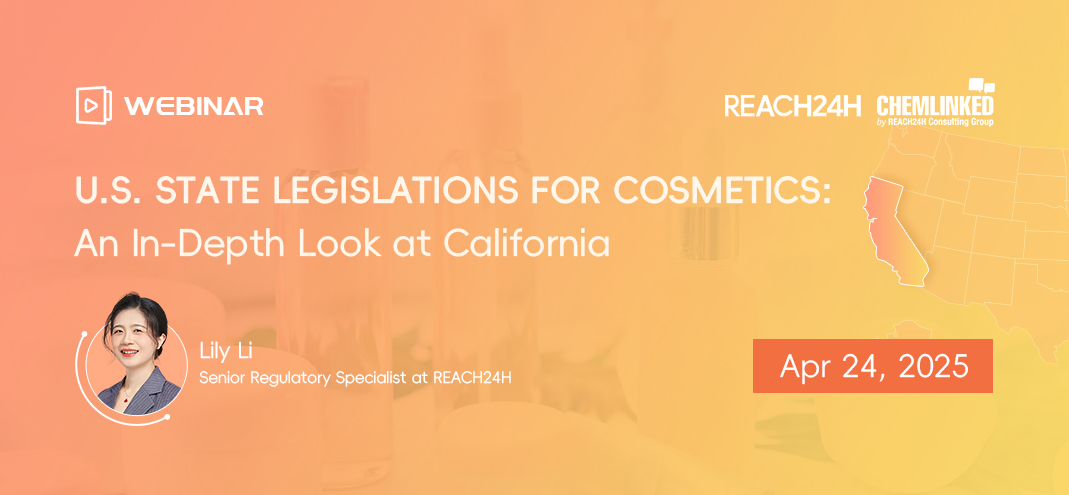China Releases Action Plan for New Pollutants Treatment
Strengthening the source control is a major method to prevent the generation of new pollutants.
General Office of the State Council of the People’s Republic of China officially released the approved Action Plan for New Pollutants Treatment (hereinafter referred to as the Plan), according to Notice No.15 of 2022 issued on May 24, 2022, which vows to improve China’s new pollutants treatment capacity significantly by 2025. The Plan was drafted to solicit public comments in October of 2021, which had attracted widespread attention from the industry (CL news).
What Are the New Pollutants?
New pollutants, in most cases, come from the production and use of toxic and hazardous chemicals, and they have common properties such as biological toxicity, environmental persistence, and bioaccumulation. Mr. Ren Yong, the Director of the Department of Solid Waste and Chemicals, Ministry of Ecology and Environment (MEE), said in response to media queries – “There are four major types of new pollutants of international concern, i.e., persistent organic pollutants, endocrine disruptors, antibiotics and microplastics controlled by international conventions”. Such pollutants pose risks to the environment and human health but are not effectively treated in the country.
It was made clear in the Outline of the 14th Five-Year Plan (2021-2025) for National Economic and Social Development and Vision 2035 of the People’s Republic of China that a bigger focus shall be placed on the treatment of new pollutants. The Plan prescribes that special treatment actions will be taken against a batch of new pollutants during the 14th Five-Year Plan period (2021-2025), with a long-term treatment mechanism to be established.
Responsibilities are Distributed to Authorities
Many authorities are responsible for the new pollutant treatment, involving the Ministry of Ecology and Environment (MEE), Ministry of Industry and Information Technology, Ministry of Agriculture and Rural Affairs, State Administration for Market Regulation, General Administration of Customs, National Development and Reform Commission, etc. The Plan clarifies the responsibilities and missions of each authority. For example, the MEE is responsible for the investigations and information gathering of chemical substances, as well as formulating relevant technical standards for pollution control.
Highlights of the Plan Summarized as Follows
– Laws, regulations, and management systems on chemical-related environmental issues will be gradually established and improved.
- The Regulation on Environmental Management of Toxic and Hazardous Chemical Substances (previously known as the draft Regulations on Environmental Risk Assessment and Control of Chemical Substanceswhen drafted in 2019 for the first time) is under preparation.
- An environment information inspection system, an environmental risk assessment system for chemical substances, and an environmental inspection and monitoring system for new pollutants are urged to be established.
- A series of regulations and standards will be formulated, covering environmental risk assessment, test methods for hazard properties, economic policies and measures, etc.
– Source control management will be strengthened to prevent the generation of new pollutants.
- Supervision on the new chemical registrations under the MEE Order No.12will be enhanced, and punishment for relevant violations will be strengthened.
- For chemicals listed in the Inventory of Severely Restricted Toxic Chemicals and chemicals listed as obsolete items in the Catalogue for Guiding Industry Restructuring, they shall be strictly restricted in use to strengthen the environmental management for import and export.
- Proportion control of the priority new pollutants in products will be strengthened, incorporating control requirements for content of relevant new pollutants into mandatory standards for products like toys, school supplies, etc., and supervising their implementation.
– Chemical inspection and monitoring are required to evaluate environmental risks and accurately identify new high-risk pollutants.
- Focusing on chemicals of high concern, high yield, high environmental detection rates, and decentralized uses, environmental and health hazard testing and risk screening will be carried out. The environmental risk assessment plan for priority chemicals and the list of chemicals for priority control will be dynamically updated. The first batch of new pollutants for priority management will be published in 2022, as well as their environmental risk assessment plan.
- Investigations on chemical substances to gather basic information will be carried out by the By 2023, the first round of investigation on basic information (production and use) of key chemical substances in key industries, and further investigation on detailed information (production, processing, and use, emissions to the environment, hazard properties, etc.) of the first batch of priority chemicals included in the environmental risk assessment plan, will be finished.
- Screening over environmental risks of high-concern and high-yield chemicals will be conducted. By 2025, the new pollutants treatment capability will also be significantly enhanced with an upgrading management system over the new pollutants set up.
Pilot Areas, and More Key Information Included in the Plan
In addition, pilot projects for new pollutant treatment will be conducted in selected enterprises and industrial parks in the Yangtze River basin, Yellow River basin, key drinking water sources, and key estuaries and bays.
Notably, a number of hazard testing laboratories with adherence to Good Laboratory Practices (GLP) will be developed, as well as the National Chemical Substance Environmental Risk Management Information System and the Chemical Substances Computational Toxicology and Exposure Prediction Platform.
The Plan covers not only industrial chemicals but also antibiotic medicines and pesticides. Pesticides of high efficiency and low risk will be put more attention to, and the persistent bioaccumulative and toxic substance (PBT), very persistent very bioaccumulative(vPvB), and adjuvants will be gradually phased out and replaced.
The official document (in Chinese) can be accessed here.
Reprinted from: ChemLinked
Contact Us
REACH24H has more than 13 years of experience providing global chemical compliance consulting services, serving more than 10,000 enterprises worldwide including BASF, Dupont, Dow, LG Chem, Firmenich, etc.
If you have any questions on global chemical management and regulatory compliance, please feel free to contact us.
Tel: +86 (0)571-87007555
Email: customer@reach24h.com


